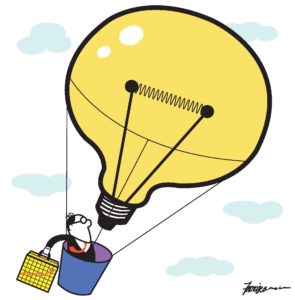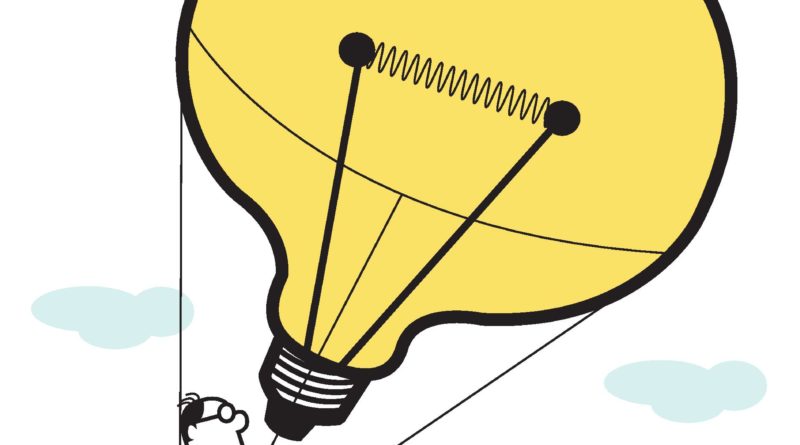BIZ-COLUMN: OPINION By Invitation – Good design is good business – Beh Swan Gin For The Straits Times
Pregnant women who do not have access to clinics run the risk of having stillborn babies.
Since 2016, however, more among them have avoided this tragic outcome as a result of a portable, easy-to-use ultrasound scanner that is under 2kg and looks like a 900ml tub of ice cream.
The Vscan Access was thought up by GE Healthcare, the healthcare business of American multi-national conglomerate General Electric (GE), after GE and GE Healthcare pledged in 2010 to help the United Nations improve maternity care globally.
GE Healthcare appointed the Singapore experience design consultancy Chemistry to do in-depth field research in the region with midwives, doctors, paramedics and others in the maternity care ecosystem.
Chemistry, led by its managing director and partner Bassam Jabry, also helped GE Healthcare plan and run workshops with the project team, as well as road-test rigorously the various ways in which users might work an ultrasound scanner.
Mr Jabry, a 43-year-old Singapore permanent resident who has lived here for 21 years, went on to design a touch screen for the Vscan Access that even a technophobe could figure out easily.
For example, using icons, colour coding and other nifty design elements, Mr Jabry and his team enabled abnormal scans to be red-flagged immediately. They also reduced visual clutter on the touch screen by having it display only those functions which users needed immediately.

ST ILLUSTRATION: MANNY FRANCISCO
.
The design of the Vscan Access’ shell and electronic innards was then completed in-house by GE Healthcare and its other vendors.
The jury for the President’s Design Awards 2016 called Chemistry’s work with GE Healthcare “a masterclass in human-centred research, user interface design and system integration, bringing critical healthcare to those who need it most”. Doctors in at least 20 countries, including Egypt, Ethiopia and Nigeria, now use the innovation, which has improved twofold the detection of life-threatening pre-eclampsia and placental abruption, compared to diagnoses without ultrasound scans.
SINGAPORE, BY DESIGN
Design thinking underpins everything Chemistry does, which is to create, and not just add, value for its clients and those who use its innovations.
Design thinking trains us to observe closely how people behave, in order to understand their needs intimately. This has led to the development of brilliant solutions to questions such as: How do you light up a bridge without energy-burning lamps? Dutch designer Daan Roosegaarde has answered that by pasting highly reflective strips on the bridge, so that the lights from passing cars flash off these strips and illuminate the surroundings.
Design thinking may seem hard to grasp at first, but, as Prime Minister Lee Hsien Loong noted at a forum with students early last month, it has in fact shaped the Singapore we see today.
PM Lee said: “We didn’t call it design thinking then, but… our founding fathers had to understand the issues, define the problem, come up with creative ideas and solutions, prototype the idea… and constantly review the thinking and the solutions.”
In a talk to students at ITE College Central on March 8, Johnson & Johnson (J&J)’s chief design officer Ernesto Quinteros described his team’s work as “care-centred design”, the sort that he wished he could have given his very sick mother when he was still in school.
That regret, he added, has since spurred him to “blend science and ingenuity” to help his customers prevent, or at least arrest, sickness. One such J&J innovation is its seven-minute workout app to nudge pregnant women to exercise safely. Singaporeans will likely hear more examples about how J&J applies design thinking as it opened its first overseas design lab here recently, in May.
Like J&J, many other international companies and start-ups are finding Singapore, with its skilled workforce and thriving innovation ecosystem, the ideal springboard into Asia and, in particular, South-east Asia.
South-east Asia is, by the International Monetary Fund’s latest reckoning, the fastest-growing region globally, with projected growth of 5.5 per cent this year. And within its population of 640 million is a burgeoning middle class with unique needs that are still unmet.
Creating new products and solutions at the right price point for such an expanding market will be an exciting and profitable proposition.
Just ask Singapore company Zimplistic, which developed its flatbread-making machine Rotimatic in the start-up incubator at Block 71, Ayer Rajah Crescent.
With support from EDB’s investment arm EDBI and other co-investors, Zimplistic is now seeking to capture 25 per cent of the world’s flatbread-loving market.
But perhaps more than the pull of market opportunities, rapidly evolving technologies are disrupting the way everything is done so fundamentally that, to stay viable, innovation is no longer a good-to-do but a must-do for every company.Thanks to Singapore’s growing base of scientific and technological capabilities that have been carefully cultivated for more than two decades, we are well placed to ride this wave.
Eighty of the world’s top 100 technology companies have operations here. Among them is Google, which entered Singapore with 30 employees in 2007, but has grown its operations to more than 1,000-strong, including its engineering team that is developing products for the “Next Billion”.
More than 27 per cent of the region’s start-ups are also based here – including local unicorns Grab, Lazada, Razer and SEA Group.
Even if we exclude the money raised by these companies, more than US$1 billion (S$1.3 billion) in venture capital has been invested in the local start-up ecosystem every year since 2013.
To make the most of the opportunities that will come from the region’s growth and from technological disruptions, EDB and Enterprise Singapore are partnering with Design Singapore Council to help companies build up their capabilities in design thinking.
Design thinking trains us to observe closely how people behave, in order to understand their needs intimately.
This has led to the development of brilliant solutions to questions such as: How do you light up a bridge without energy-burning lamps? Dutch designer Daan Roosegaarde has answered that by pasting highly reflective strips on the bridge, so that the lights from passing cars flash off these strips and illuminate the surroundings.
Or how do you get children to clean their teeth properly? Global appliance giant Royal Philips’ Singapore arm came up with a Bluetooth-enabled electric toothbrush that triggers an app in which children chase imaginary bugs in their mouths while brushing their teeth. The app works so well that parents have to stop their kids from brushing for too long.
As PM Lee reminded us, Singapore is a nation by design.
Design thinking coupled with technological capabilities will be a powerful combination that will help Singapore in its journey to become an innovation-led economy.
•Dr Beh Swan Gin is the chairman of the Singapore Economic Development Board. He is also the chairman of Singapore’s Design 2025 Masterplan Committee. / Beh Swan Gin For The Straits Times / PUBLISHED / 4 HOURS AGO / 0916 HR.


 All photographs, news, editorials, opinions, information, data, others have been taken from the Internet ..aseanews.net |
All photographs, news, editorials, opinions, information, data, others have been taken from the Internet ..aseanews.net | 






